8 Best Burpee Variations (with Pictures!)
Few exercises are as functional and explosive as the burpee - but with so many variations to pick from, deciding on a single one can get overwhelming.
Fortunately, the majority of burpee variations all cover a different set of goals and benefits. This makes picking the right one for your needs quite simple.
Although there is no substituting the conventional burpee, a few variants you may want to try are the leg-focused squat burpee, the highly aerobic mountain climber burpee or (if you’re new) the half burpee.
What is a Burpee?
While it’s likely you’re reading this article because you already know what a burpee is - the burpee is defined as a modified squat thrust exercise with an additional jumping movement at the end of the repetition.
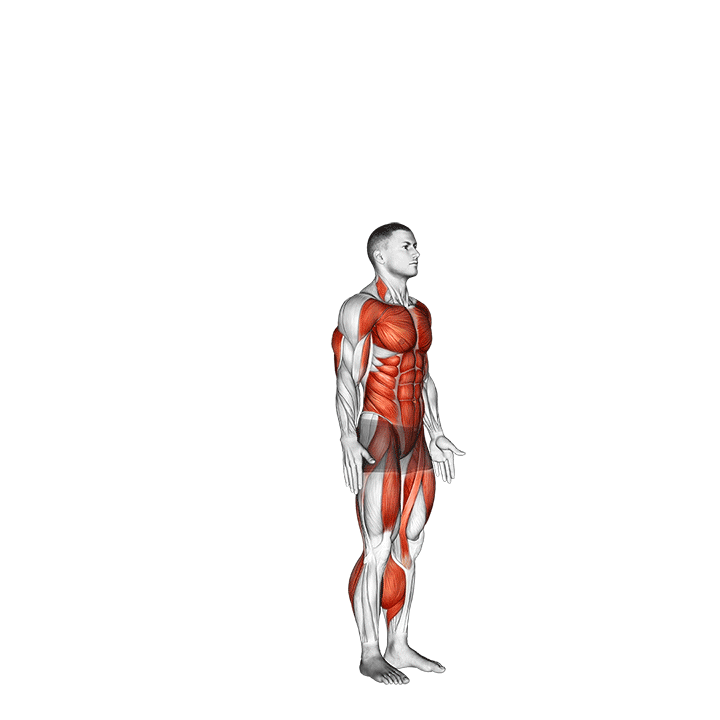
This designates most burpee variations as highly dynamic full-body anaerobic compound exercises that can double as a form of aerobic exercise as well.
Burpees are performed for a wide range of purposes, spanning from basic full-body conditioning to being used as a standard exercise for military physical assessment.
For the purposes of this article, we’ve selected the most efficient and widely-used variations for you to pick from.
Contrary to what more experienced exercisers may believe, the traditional burpee does not include a push-up as the lifter enters the plank stance. This is instead known as a “push-up burpee”, and features a different muscular recruitment pattern to its conventional variation.
Burpee Variations
1. The Conventional Burpee
The conventional burpee (as outlined by its creator) is meant to be a simple and efficient full-body exercise that works the majority of the body’s musculature with moderate intensity. In addition, when performed in high volume, it can double as a form of aerobic exercise.

As will be the case for most burpee variants, the regular burpee is a highly dynamic compound movement primarily performed with bodyweight resistance alone.
Muscles Worked
Burpees primarily target the glutes, quadriceps, calves and hamstrings in a highly intense manner. In addition, during certain portions of the repetition, the pectorals, deltoids and triceps are also utilized.
Benefits as a Burpee Variation
The conventional burpee is most beneficial when used as a “baseline” exercise for learning more complex variations.
In addition, it is just intense enough for general volume to be maintained without comparatively smaller muscle groups like the deltoids or hip flexors becoming fatigued and limiting repetitions. This can come in useful for weight loss, as part of an aerobic drill or as a finishing exercise.
How-to:
Entering a standard squat position with their hands on the floor and their feet slightly wider than hip-width apart, the lifter will then draw their feet backwards until they have entered the standard plank position, arms fully straightened.
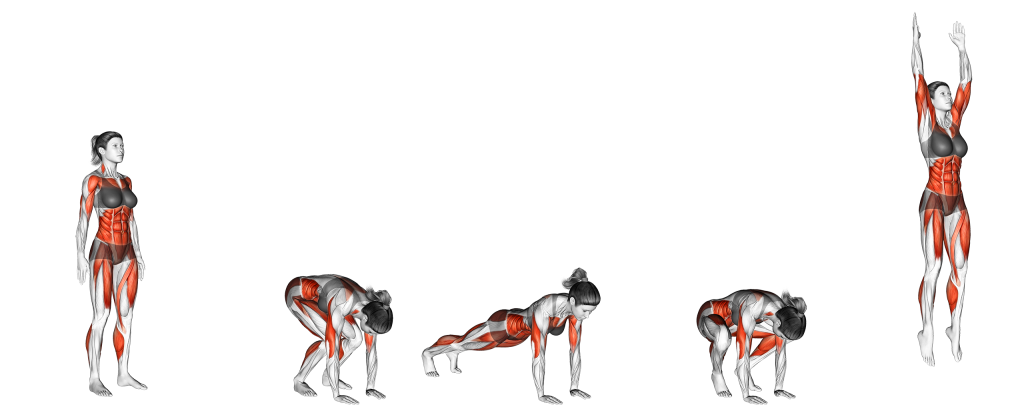
From this pose, the lifter then kicks their feet back into the starting squat position.
Once back in the bent-over squat position, they will drive through their heels and straighten their torso until standing upright - thereby completing the repetition.
2. The Half Burpee/Beginner Burpee
For athletes seeking a less intense burpee variation (or for those new to burpees in general), a good option is to perform the half burpee.
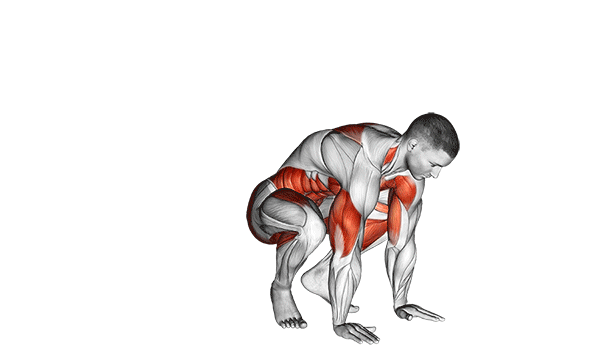
As its name implies, half burpees feature a somewhat less intense movement pattern, and will instead call for the lifter to move one leg forwards at a time, rather than hopping into a standing position. In addition, this particular burpee variation is meant to be performed more slowly than others of its kind.
Otherwise, the defining aspects of the half burpee are much the same as the conventional burpee - that being a dynamic movement pattern, full-body conditioning and both aerobic and anaerobic stimulus.
Muscles Worked
The half burpee works the same muscles as the conventional burpee - those being the quadriceps, glutes, hamstrings, pectorals, triceps and deltoids. However, it works these muscles with markedly less intensity.
Benefits as a Burpee Variation
Apart from acting as a progression to more difficult burpee variations, the half burpee is quite useful as a warm-up and mobility tool - especially in regards to the hip flexor and quadriceps muscles.
In addition, the half burpee may also be programmed after a set of burpees (or other exercises) so as to help eke out further training despite being already fatigued.
How-to:
To perform a beginner burpee, the lifter will begin by standing with their feet shoulder-width apart. From this starting position, they will bend at the hips and lower themselves into a standard plank stance, legs still shoulder-width apart.

From this stance, the lifter will then step one foot forwards before following up with the other - rising into a standing position as they do so. Once back in a standing position, the repetition is considered complete.
3. The Push-Up Burpee
A more intense and upper-body focused variation of the burpee - the push-up burpee takes the standard burpee movement pattern and adds a push-up after the plank stance.
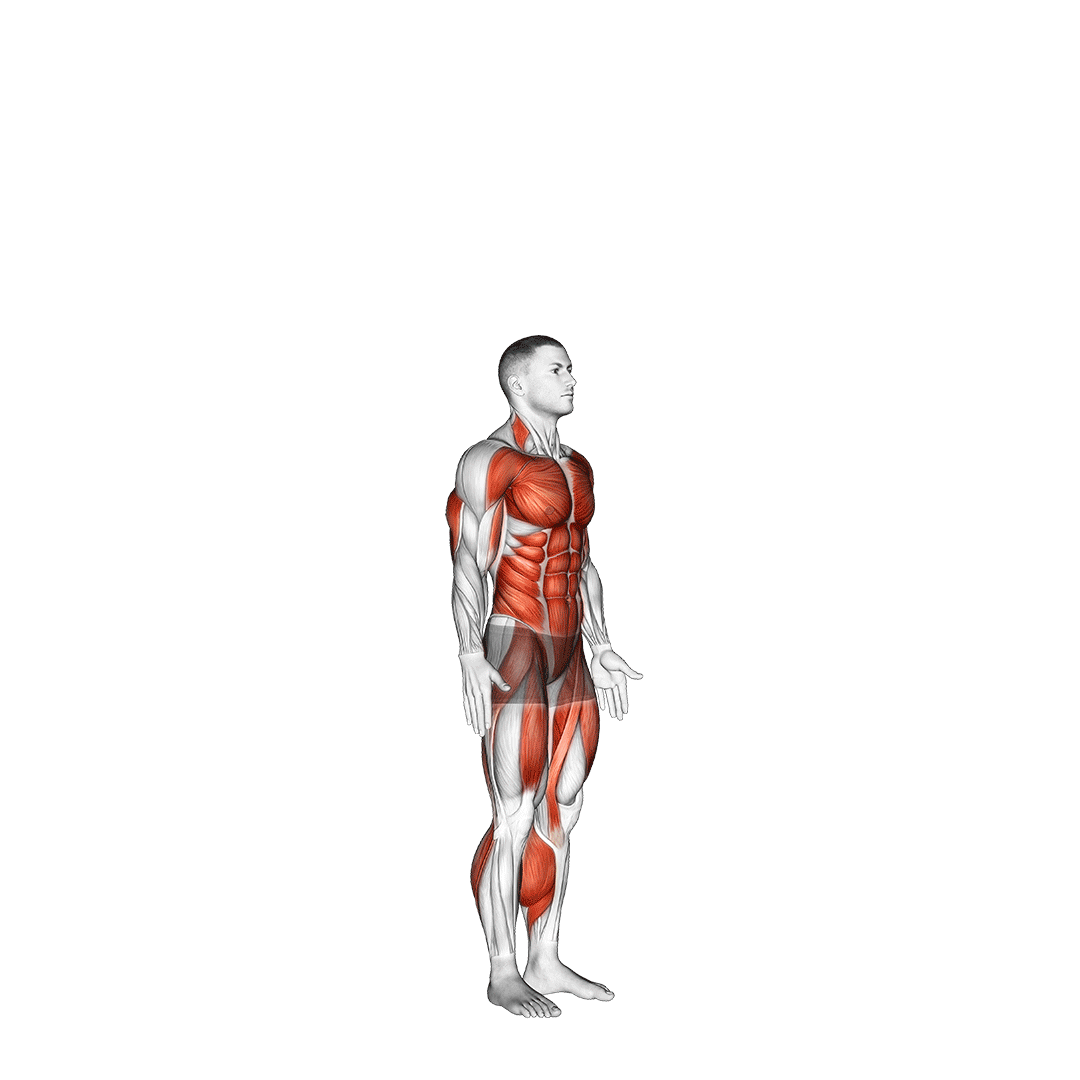
Not only does this improve how well the burpee targets the upper push muscles, but doing so will also greatly increase the intensity of each repetition.
Apart from the addition of a push-up, the exercise remains otherwise identical to a regular burpee.
Muscles Worked
The push-up burpee will target the pectorals, deltoids and triceps alongside the glutes, quadriceps, hamstrings and calves.
Benefits as a Burpee Variation
The push-up burpee takes the full-body conditioning of conventional burpees and places greater emphasis on the chest and triceps. Apart from building strength and power, this also allows the exerciser to burn more calories as each repetition is made more anaerobically intense.
How-to:
To perform a push-up burpee, the lifter will begin by lowering from a standing position into the standard plank stance, hands set slightly wider than shoulder-width apart.
Now in a plank stance, the lifter will bend at the elbows and perform a push-up. As they rise out of the push-up, the lifter will kick their feet forwards, following the upward motion until they are in a standing position.
Once standing, the repetition is considered complete.
4. The Squat Burpee
As the name implies, the squat burpee is simply a standard burpee but with the inclusion of a squatting motion as the lifter rises out of a plank position.
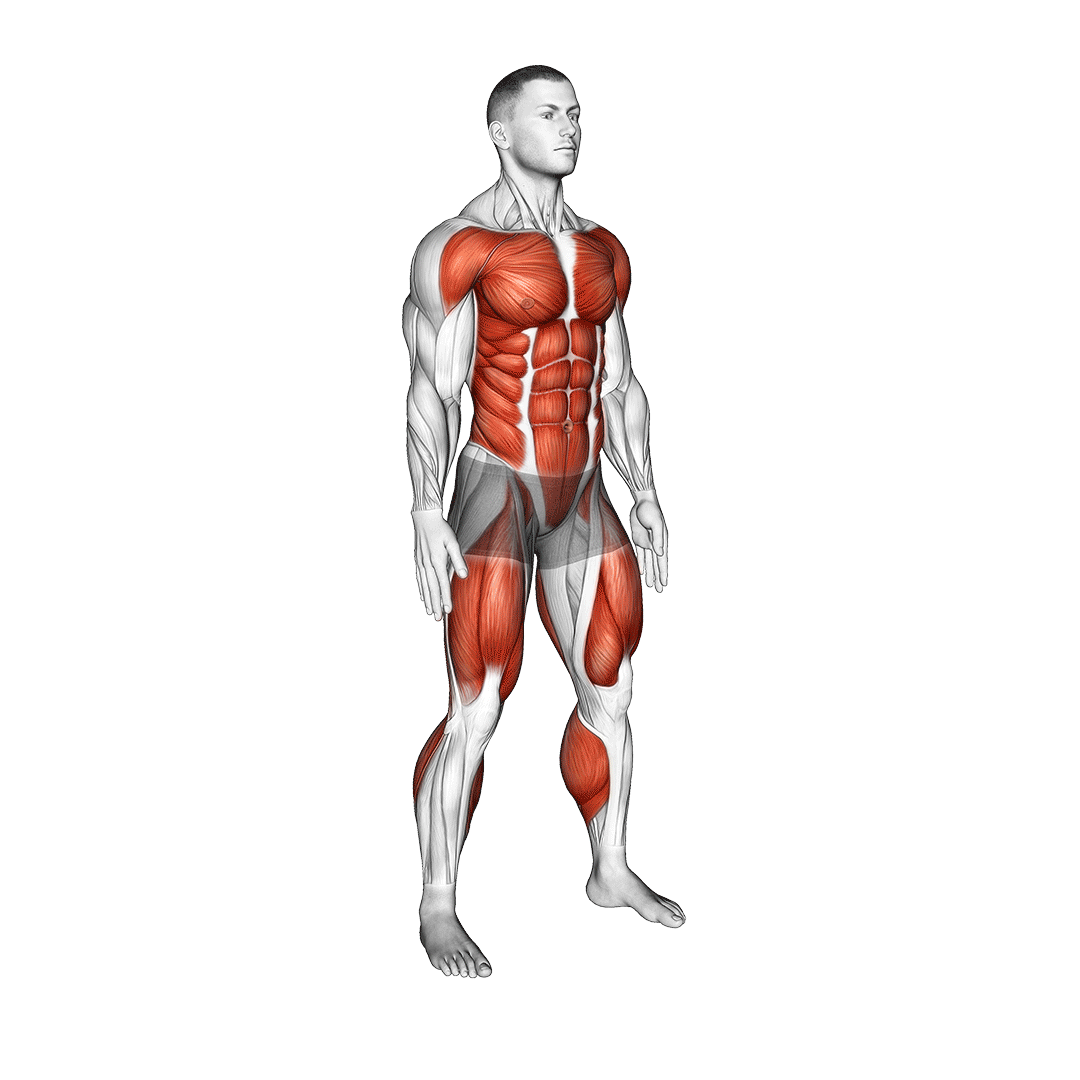
With the addition of an additional squatting motion, the squat burpee greatly emphasizes the muscles of the lower body - and is unparalleled among burpee variations for building leg muscle power and explosiveness.
Like other burpee variants, the squat burpee is meant to be performed unweighted, but more advanced athletes can better develop their lower body further by gripping a pair of dumbbells in their hands.
Muscles Worked
Squat burpees emphasize the quadriceps, glutes, calves and hamstrings - but will also include the deltoids and triceps in a manner similar to conventional burpees.
Benefits as a Burpee Variation
The squat burpee is an effective burpee variation for lifters seeking more emphasis on their lower body, or for those that wish to up the intensity but have difficulty taxing their upper body muscles.
Furthermore, the squat burpee is quite effective when included into athletic training drills meant to build explosiveness derived from the posterior chain muscles. A few notable pairings include mountain climbers, lunges and box jumps.
How-to:
To perform a squat burpee, the lifter will begin by performing the initial phase of a conventional burpee. This is achieved by lowering into a plank stance from an upright position, throwing the feet back as the arms extend forwards.
Once in a plank position, rather than pushing the legs forwards and immediately standing up, the lifter will first throw their hips backwards into a bodyweight squat.
When the hips are parallel to the knees, the squatting motion is complete, and the lifter then rises explosively upwards into an upright position. This may be made more intense by jumping out of the squat’s depth, instead of simply standing up.
Now returned to a standing position, the repetition is considered complete.
5. The Pull-Up Burpee
Burpee pull-ups are an advanced burpee variation that truly take full-body conditioning to the next level. Because of the sheer difficulty of performing a conventional pull-up (let alone after a burpee), lifters will rarely be able to perform more than 10-15 repetitions in a single set.
This reduction in volume makes the pull-up burpee impossible to use as a form of aerobic exercise, but otherwise quite useful for training the back and biceps alongside the lower body.
Of course, the pull-up burpee will require a pull-up bar to perform.
Muscles Worked
The pull-up burpee will work both the back and lower body in equal measure. This means the quadriceps, glutes and hamstrings are targeted just as much as the latissimus dorsi, biceps brachii, and other mid-back muscles.
Back and legs aside, the triceps and deltoids will also be used to a lesser extent as well.
Benefits as a Burpee Variation
As one can guess, the main benefit of performing a pull-up burpee is its capacity to build back muscle mass and strength alongside the usual benefits of burpees. This makes it perfect for certain types of athletes who regularly perform activities that require both back and lower body strength, such as rock climbers or parkour traceurs.
How-to:
To perform a pull-up burpee, the lifter will essentially perform a regular burpee before leaping towards a pull-up bar and performing a pull-up.
To do this, the lifter will lower themselves into a traditional plank position from a standing one. Now in a plank position, the lifter moves their feet towards their hands and explosively pushes themselves back into an upright position.
Once the torso is oriented vertically, the lifter leaps upwards and grasps an overhead pull-up bar with their hands set wider than shoulder-width apart.
Now hanging from the pull-up bar, the lifter contracts their core so as to prevent the legs from swinging and draws their scapula together. Alongside contracting the back muscles, this should raise the lifter upwards.
Once the bar is below the lifter’s chin, they will slowly lower themselves back downwards and return to the ground - thereby completing the repetition.
6. The Long Jump Burpee
Long jump burpees are a specialized version of burpees meant to improve jump height, distance, and the explosiveness of the lower body.
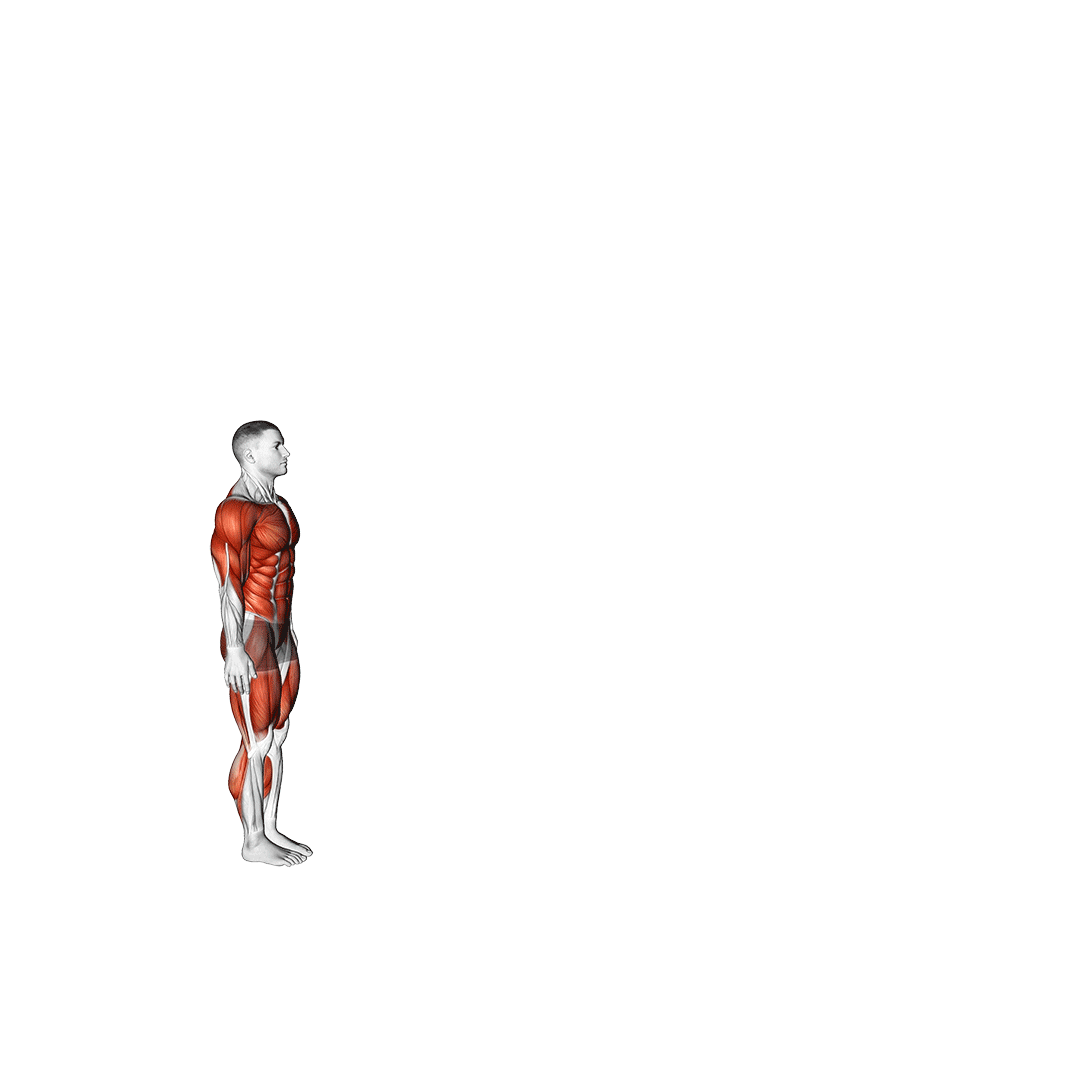
As its name implies, the long jump burpee has the lifter leaping forwards as they rise out of the plank stance, rather than simply jumping upwards. While this works much the same muscle groups to a similar intensity, it does improve certain skills critical for athletes and functional fitness enthusiasts.
Muscles Worked
The long jump variation of the burpee works the quadriceps, glutes and hamstrings to a significant extent - as well as the triceps and deltoids, albeit to a lesser one.
Benefits as a Burpee Variation
The long jump burpee is primarily used for its sports-specific benefits, meaning that it improves explosiveness and general jumping power. This also makes it quite effective when included into athletic training drills that also feature plyometric exercise, such as what a sprinter or CrossFit athlete would participate in.
How-to:
To perform a long jump burpee, the lifter will perform the standard burpee by dropping into a plank stance from a standing position. Rising out of this plank stance, the lifter will rapidly perform a triple extension movement by launching off their heels and knees.
Using this momentum, the lifter will perform a long jump forwards, landing on their heels and rising into a standing stance. From this point, the repetition is complete.
7. The Mountain Climber Burpee
The mountain climber burpee is exactly as it sounds - a conventional burpee with the inclusion of mountain climbers during the plank phase of the exercise.
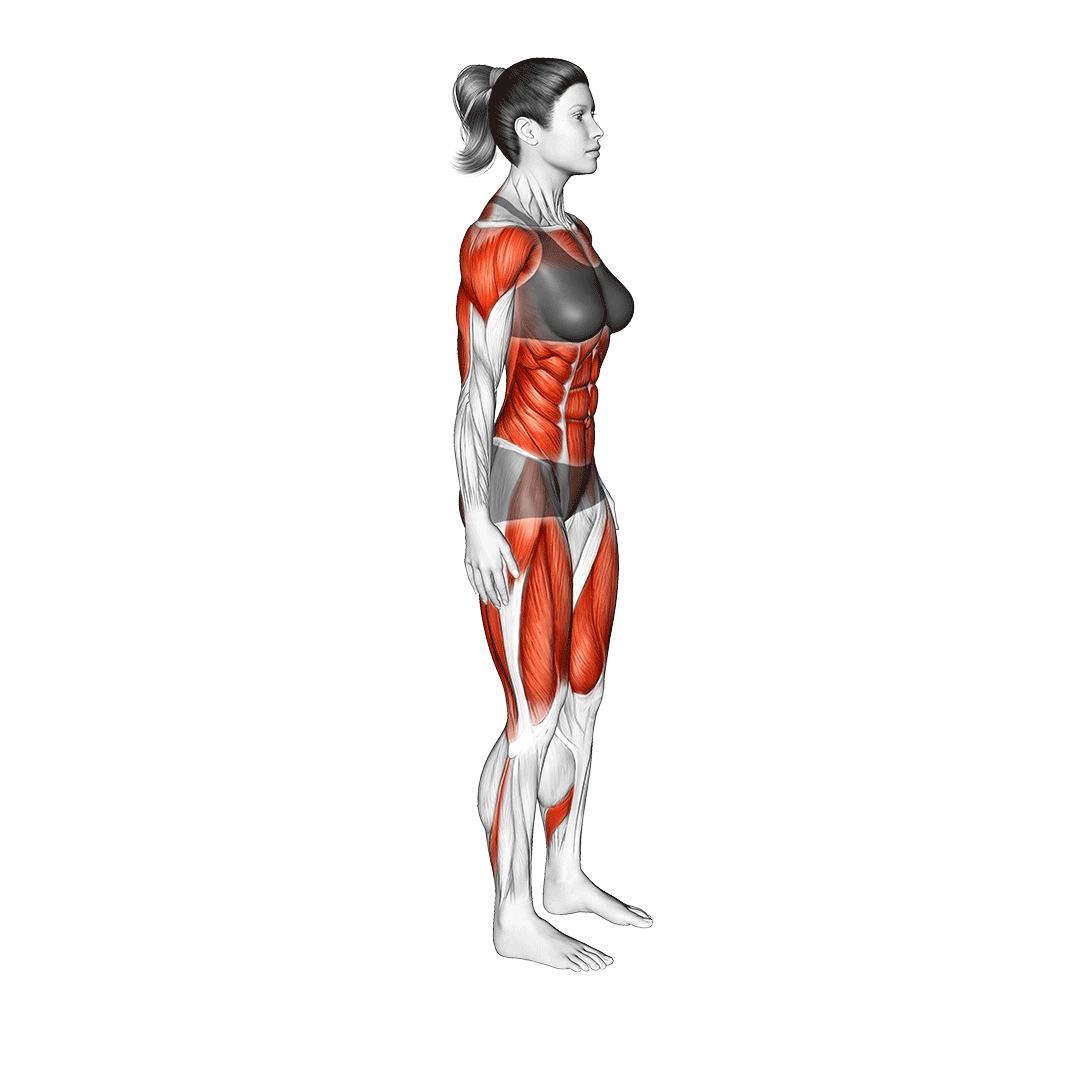
Mountain climber burpees, like regular burpees, focus primarily on the muscles of the lower body.
Unlike conventional burpees however, the mountain climber burpee is almost immediately considered an aerobic exercise, and is meant to build upon the burpee’s already inherent capacity for burning calories and acting as cardio.
Muscles Worked
The mountain climber burpee primarily targets the glutes, quadriceps, calves and hamstrings. Of course, due to the plank stance and mountain climbers, the deltoids, triceps and abs are also worked in a static capacity as well.
Benefits as a Burpee Variation
Adding mountain climbers into what is already an aerobically-intense exercise takes its fat-burning capabilities and cardiovascular benefits to the next level. What’s more, combining two classic functional exercises makes the mountain climber burpee perfect for training rhythm and stamina in athletes.
How-to:
To perform mountain climber burpees, the lifter will begin by lowering themselves into the starting plank position, arms set slightly wider than normal for greater stability.
Once lowered into the plank position, the lifter will draw one knee forwards (towards their arms), before rapidly extending it backwards once more. They will perform this motion in alternating fashion with both legs, each time moving one leg forwards and back.
When they have repeated the mountain climber for a sufficient number of repetitions, the lifter will then extend both legs backwards and assume the standard plank stance once again.
From this point, the lifter simply kicks their legs forwards and rises back into a standing position - thereby completing the repetition.
8. The Box Jump Burpee
Burpee box jumps, like long jump burpees, are a highly explosive burpee variation featuring a distinct jumping motion near the end of the repetition.
Like some other burpee variations, the box jump burpee is plyometric in classification, and primarily performed so as to maximize explosiveness and power in the lower body. As its name implies, the exercise ends with the lifter launching onto an elevated surface - often a plyometric box or similarly stable item.
Muscles Worked
The box jump burpee works the glutes, quadriceps, hamstrings and calves to a greater degree than most other burpee variations. In addition, the deltoids and triceps are also contracted isometrically.
Benefits as a Burpee Variation
Box jump burpees are an effective way of training the lower body’s extension capabilities in a manner that also builds jump height and explosiveness. Ofcourse, these benefits also come alongside those inherent to regular burpees - cardiovascular stimulus, caloric expenditure and athletic carryover.
How-to:
To perform a burpee box jump, the lifter will first perform a standard burpee by dropping into a plank stance before kicking their legs forwards and rising back into a standing position.
Once back in a standing position, the lifter will dip slightly at the knees and hips, generating momentum as they launch themselves up into the air - high enough to land atop the box.
Now squatting atop the box, the lifter will then return to the ground so as to complete the repetition.
Which Burpee Variation Should You Pick?
The correct burpee variation to pick is the one that best fits your training needs. However, prior to picking a more specialized type of burpee, it is important to first master the regular burpee.
Once you can perform a full set of conventional burpees with proper form, picking an exercise that either ups the intensity or features an alteration that better meets your training goals is the next step.
For example - if you require greater cardio, mountain climber burpees. For greater jumping power, the long jump or box jump burpee. For inclusion of the back muscles, the pull-up burpee.
References
1. Stryker, Krista. The 12-Minute Athlete: Get Fitter, Faster, and Stronger Using HIIT and Your Bodyweight. United States: S&S/Simon Element, 2020. ISBN: 9781982136499, 1982136499
2. Klika B, Jordan C. High-intensity circuit training using body weight: Maximum results with minimal investment. ACSM’s Health Fitness J. 2013;17(3):8–13.
